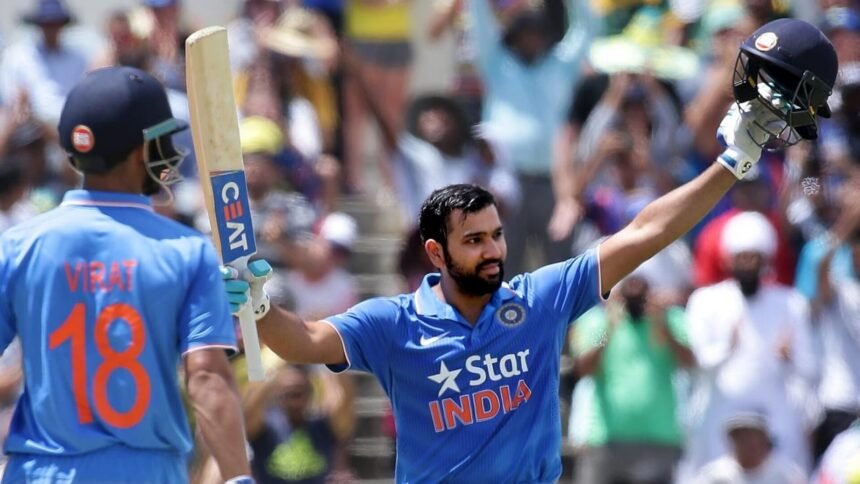Rohit Sharma returns to the cricket field after a seven-month break when India face Australia in the first ODI at the Perth Stadium on Sunday. It provides the perfect opportunity to take a look at his highest ever score in an ODI in Australia, althought Indian fans may not be thrilled to know what happened after Rohit and India’s innings.
That epic knock came in the first ODI out of a five-match series that in January 2016 and incidentally, it was also in Perth, albeit at the old WACA and not the swanky Perth Stadium that will host Sunday’s game. India captain MS Dhoni won the toss and chose to bat first. India’s top three of Rohit, Shikhar Dhawan and Virat Kohli had become set by then, although Dhawan was in some pressure for his run of poor form away from home leading up to the series. Dhawan ended up falling for just nine runs in 22 balls to Josh Hazlewood.
Rohit’s unbeaten 171 at the WACA in 2016
But then came a 207-run stand between Kohli and Rohit which had seemingly set India on their way to a winning start to the series. Rohit raised his century in the 37th over and then took off. The boundaries started flowing from his bat and his next 50 came in just over 30 balls. Rohit finished the innings unbeaten on 171 off 163 balls. Kohli, on the other hand, missed out on his own century, falling on 91 off 97 balls. India finished with a score of 309/3.
Quite incredibly, though, that was far from enough. Australia captain Steve Smith smashed 149 off 135 balls and George Bailey scored 112 in 120 as Australia chased the target down with five wickets and four balls to spare. They saw Kohli and Rohit’s mammoth stand and raised it, putting up 242 runs off 223 balls for the third wicket. Glenn Maxwell and Mitchell Marsh provided the finishing touches.
The result as part of a strange pattern that had emerged for Rohit and India. He had already scored two double centuries by then in ODIs, including the record 264 against Sri Lanka. However, four of Rohit’s five international centuries at that point had been in losing causes for India.








